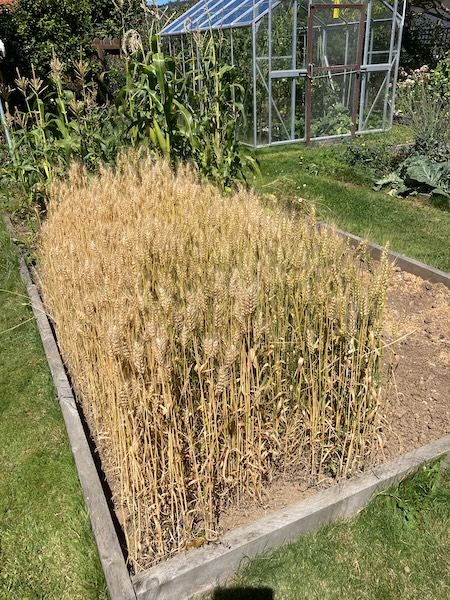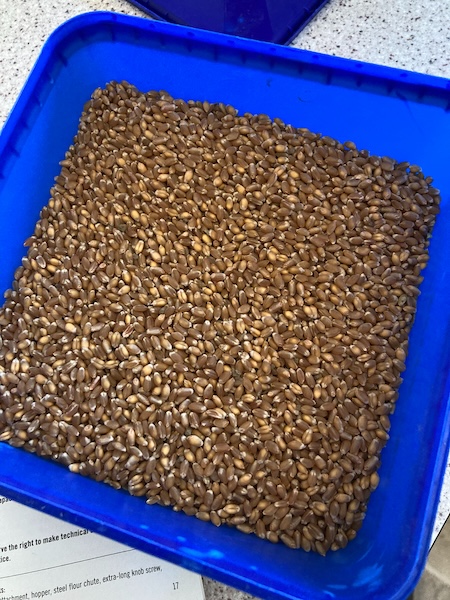
This Year's Wheat Harvest and New Harvesting Methods
Hello friends,
We grew wheat again in the 2023/2024 season with the hope to grow enough flour to make a loaf of homemade bread. We planted out our wheat seeds back in November 2023, and had a great harvest in February 2024 this year. If you want to learn more about growing wheat at home you can read it in this blog post.

With the wheat harvested, I dried it in readiness for processing. This year I wanted to try some new processing methods, to see if they would be more efficient than last year's methods. The first new method was to try removing the wheat heads from the stalks using a garden chipper/shredder. You can see footage on Youtube of this happening here.
Luckily we had a garden shredder in our garage, so we got to work. It didn't take very long at all to harvest the wheat heads from the stalks. The wheat heads fell into the hopper below, and the stalks were dug back into the garden bed from where they came from. I had hoped that the garden chipper would break open the wheat heads, but unfortunately they were still mostly intact afterward.

The next step was to thresh the wheat. Last year we just bashed the wheat heads with a piece of wood, but it was a lot of work. But I found this video on YouTube recently of someone threshing wheat with a flail.
Eager to try this method out, I bought two broom handles from Mitre 10 (broom handles are much cheaper than dowel), two metal eyes, and a length of rope. Once I got home I sawed off the ends of the two broom handles so that one handle was 1.5 m long, and the other 1 m long. I then tied them together with a length of rope.
Hubby got to work threshing the wheat heads on an old sheet. It turns out that the 1 m length of flail that was hitting the wheat heads was too long, so we cut it down to 75 cm. Another problem was that the wheat heads were flying off in every direction when hit, so we wrapped the wheat heads up into the sheet like a burrito, to keep them all in one place. After a couple of minutes of threshing using this method, it was completed. We separated the bigger pieces of plant material by hand, and then used a large sieve to further remove the medium-sized pieces of plant material.
When we thresh the wheat again next year I think we will alter the flail, and use leather strips to connect the two broom handles. The rope had a tendency to come undone, and the short piece of broom handle doing the threshing would fly off. I would also love to invest in a seed saving screen from Crafty Gatherer NZ, but it's pretty pricey.
After that, all that remained was the wheat berries and the chaff. The next step was winnowing. After watching the videos above, we saw that most people used small fans to separate the wheat from the chaff. Luckily it was now autumn, and most places were selling off fans very cheaply. Hubby took a trip to our local Mitre 10, and purchased a fan at a decent price.
He set up the fan, and got to work winnowing. The videos above suggested working a slow speed for the first pass, to remove dust, and then work your way up to faster speeds to get rid of bigger material. With the help of the fan we got the winnowing done a period of less than five minutes. With a constant breeze, it made the job so much easier.

With the winnowing done, the processing of the wheat was complete. Overall, these new wheat processing methods saved us a lot of time, and it also made the process so much easier. We'll be using this method again next year when we grow our own wheat. In a future blog I will be showing the wheat milling process, and also our recipe for making bread in a bread maker.
Have a wonderful day
Julie-Ann
Want to discuss my post? Feel free to chat with me on Instagram or Mastodon or Bluesky.




